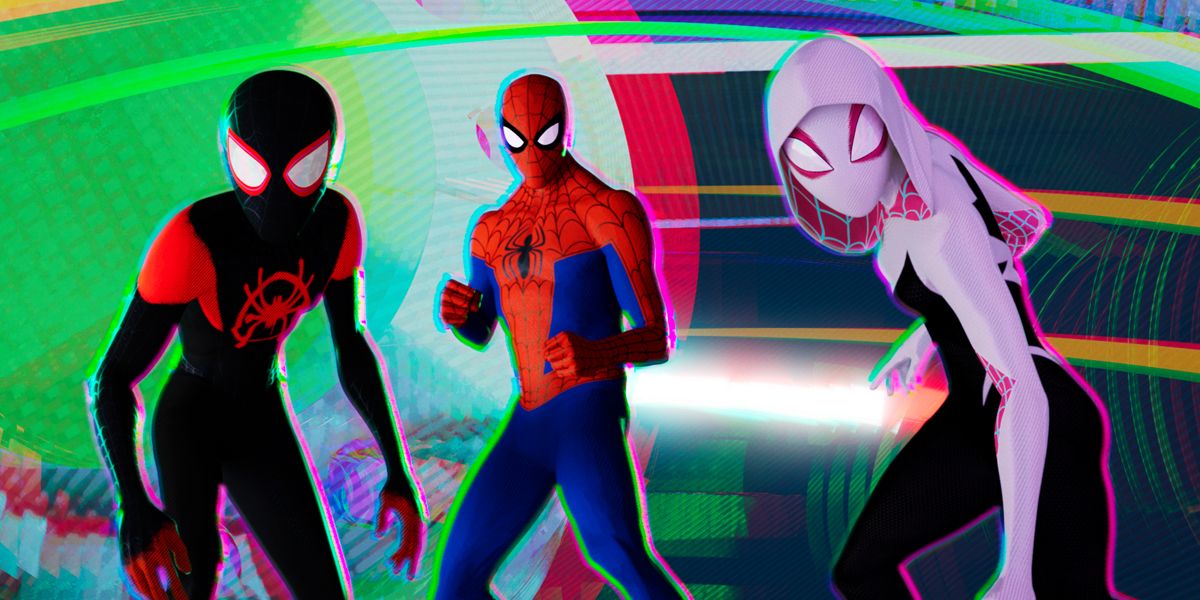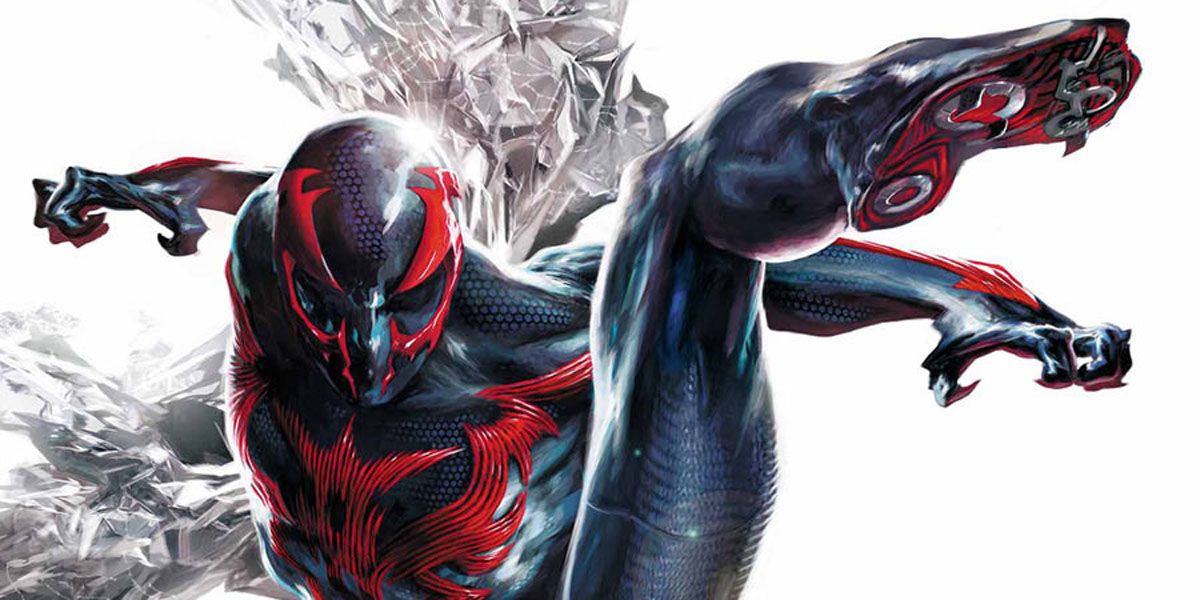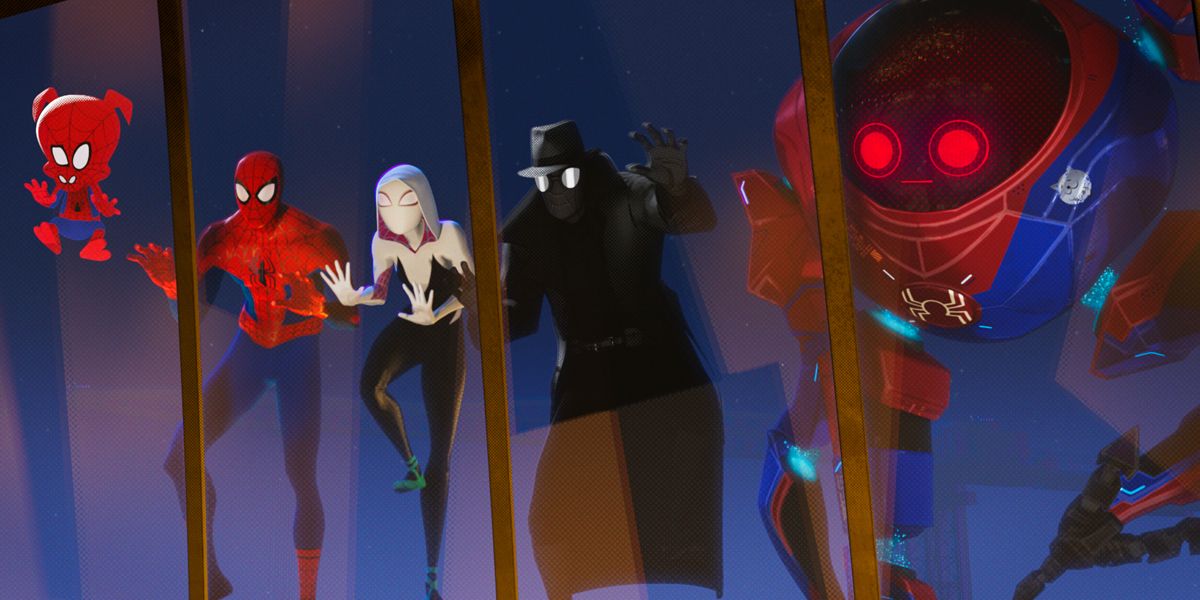WARNING: The following article contains spoilers for Sony's Spider-Man: Into the Spider-Verse, in theaters now.
The post-credits scene of Spider-Man: Into the Spider-Verse is a perfect cap to the multiverse-spanning adventure of Miles Morales, Peter Parker and the other Spider-heroes that not only seeks to get a laugh but also to lay the groundwork for additional animated films.
The sequence introduces another, fan-favorite Spider-Man while working in a clever nod to a well-known internet meme.
Back to the Future
Into the Spider-Verse ends with Miles Morales (voiced by Shameik Moore) about becoming the Spider-Man of his universe. The final moments depicts a light shining over his face and the voice of Gwen Stacy (Hailee Steinfeld) whether he's "got a minute." As Gwen had already returned to her universe, that implies the boundaries between realities has been weakened, which makes sense given what's revealed in the after-credits scene.
RELATED: Spider-Man: Into the Spider-Verse Has the Perfect Shoutout to Donald Glover
That sequence opens on the hologram of a woman Lyla, appearing alongside videos of the Spider-heroes introduced in the film. Speaking to an (initially) unseen person, she explains the multiverse and the heroes that populate those alternate realities. She also speaks with the man about the newly created device he's holding, which can transport him across realities.
He's revealed to be Miguel O’Hara (Oscar Isaac), better known to Marvel Comics readers as Spider-Man 2099, who quickly dons the watch and transports to another reality. Unfortunately for him, that reality turns out to be the 1960s animated Spider-Man series, leading Miguel and that version of the wall-crawler to reenact the "Spider-Man Pointing at Spider-Man" meme. It's played for laughs, of course, but there are larger ramifications to the stinger.
Who Is Miguel O'Hara, Spider-Man 2099?
Introduced in 1992 as part of the Marvel 2099 comic book imprint, Miguel O'Hara is a geneticist working for the Alchemax Corporation in his futuristic universe, where he's tricked into taking a highly addictive drug in an effort to prevent him from leaving the company. Miguel then attempts to cure himself by rewriting his genetic code, but the equipment is sabotaged by a jealous co-worker, which results in him receiving spider DNA. Miguel emerges from the process with spider-abilities, which he uses to wage war against Alchemax and other criminals as Spider-Man (aided by his holographic assistant Lyla).
RELATED: Spider-Man: Into the Spider-Verse's Ending, Explained
The popularity of Spider-Man 2099 has endured, with the character appearing over the years in comics, and making the leap to animated television, video games and, now, Into the Spider-Verse.
Web Warriors
The arrival of Miguel is great for longtime fans, but more important for the Spider-Verse might be his dimension-hopping watch. The devices play a crucial role in recent comic storylines like Spider-Geddon, in which various Spider-heroes use them to traverse the multiverse and help each other fight evil.
That's key to the premise of the Web-Warriors series, which features, among other things, an army of Electros, a genuinely adorkable heroic version of Doctor Octopus, and plenty of reality-jumping shenanigans that could fuel any number of Into the Spider-Verse sequels.
Directed by Bob Persichetti, Peter Ramsey and Rodney Rothman, Spider-Man: Into the Spider-Verse stars Shameik Moore, Brian Tyree Henry, Jake Johnson, Mahershala Ali, Hailee Steinfeld, Liev Schreiber, Luna Lauren Velez, Lily Tomlin, Nicolas Cage, John Mulaney and Kimiko Glenn. The film is in theaters nationwide.




